CARS
12 Most Astonishing Concept Cars Ever Created
Published
5 months agoon
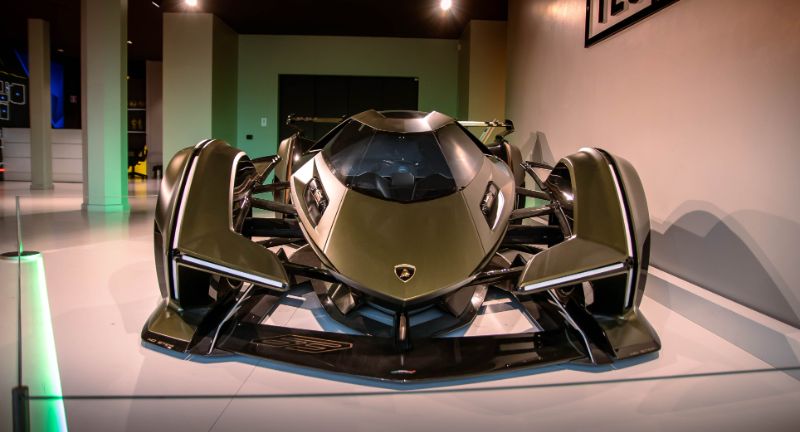
Shutterstock
Over decades, the auto industry has been the birthplace of innovation and creativity. Unveiling concept cars that have dramatically shifted the standard of design, technology, and performance. These visionary creations, often resembling something out of a science fiction fantasy, have not only previewed the future of transportation but also inspired the mass production models that drive our streets today. Concept cars have continuously redefined the boundaries of automotive engineering and aesthetics, influencing the evolution of the car as we know it.
Here are 16 of the most unique concept cars ever developed.
Chrysler Atlantic
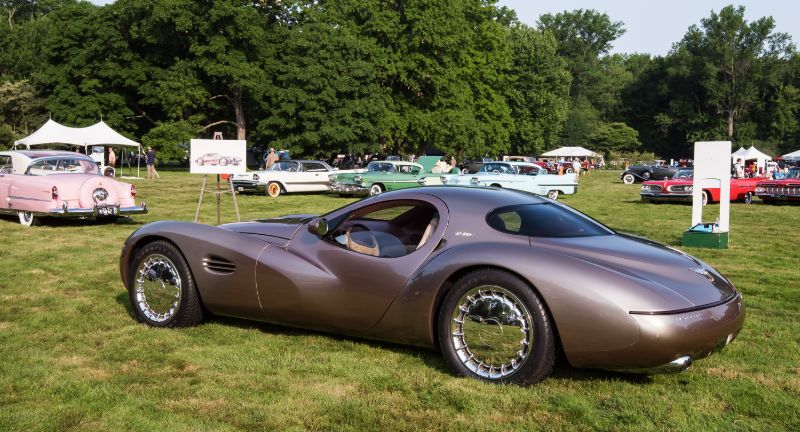
Shutterstock
Debuting at the 1995 Detroit Auto Show, the Chrysler Atlantic is a concept car inspired by classic designs of the 1930s. The car was also inspired by the Bugatti Atlantic, blending these influences with Chrysler’s modern design. Its distinctive features include a long, flowing hood, a split windshield, and a boat tail rear, all powered by a unique straight-eight engine created by combining two Neon four-cylinder engines. The Atlantic represents a unique moment in Chrysler’s history, where nostalgia and future vision intersect to create a vehicle that was both a tribute to the golden age of automotive design and a showcase of the brand’s craftsmanship and engineering capabilities.
Ford Nucleon
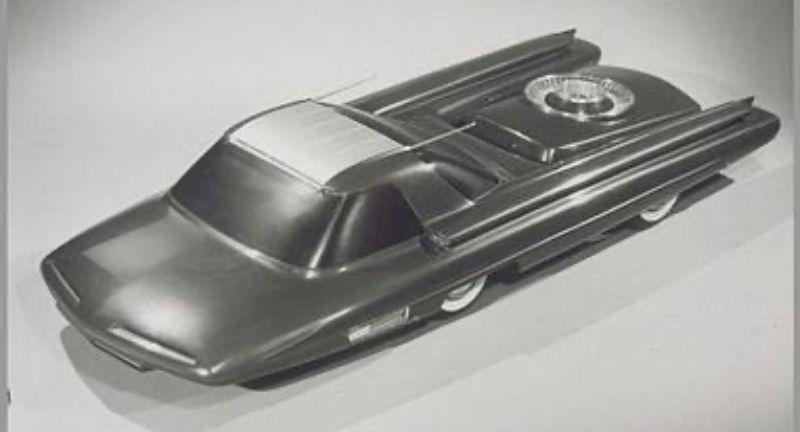
Wikipedia
The Ford Nucleon was a concept car that proposed the use of atomic energy for propulsion. While it was seen as a radical idea for 1958, it reflected the era’s fascination with nuclear power. Designed to be powered by a small nuclear reactor in the rear of the vehicle, the Nucleon promised an almost unlimited range without the need for refueling. Although it never went beyond a scale model, the Nucleon remains a significant example of mid-century futurism in automotive design.
Citroën Karin

Wikipedia
The Citroën Karin caught the attention of many at the 1980 Paris Motor Show, showcasing its strikingly angular and pyramid shape design. The Karin challenged conventional automotive design norms with its three seater configuration and a highly futuristic interior. Its design featured a truncated pyramid shape with a sharply pointed front and a roof that almost directly met the car’s flat rear end, aiming to maximize aerodynamic efficiency and interior space.
Lancia Stratos Zero
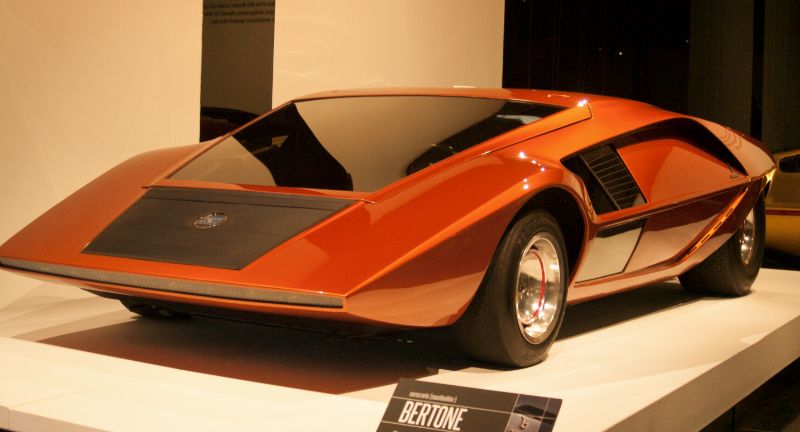
Wikipedia
Unveiled in 1970, the Lancia Stratos Zero was a groundbreaking concept car designed by Marcello Gandini at Bertone. Most known for its incredibly low profile, measuring just 33 inches in height, and its futuristic wedge shape. The Stratos Zero’s bold, angular design and striking lime green finish set a new standard for automotive aesthetics and directly influenced the design of the Lancia Stratos HF, a legendary rally car.
1966 Alfa Romeo Carabo
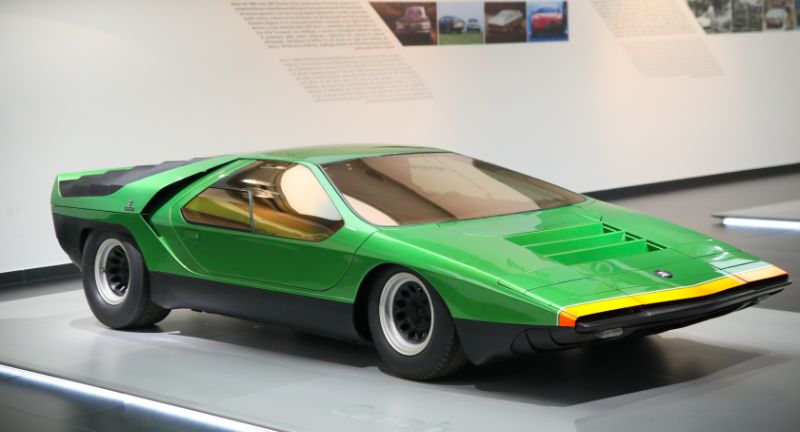
Shutterstock
The 1966 Alfa Romeo Carabo, also designed by Marcello Gandini at Bertone, is celebrated for introducing the wedge-shaped design that became synonymous with high performance sports cars of the 1970s and ’80s. Its name, derived from the Carabidae beetle, is reflected in its iridescent green and orange paintwork, mimicking the beetle’s coloration. The car’s scissor doors would become a hallmark of Lamborghini’s most iconic models. The Carabo was based on the chassis of the Alfa Romeo 33 Stradale and featured a V8 engine, combining revolutionary aesthetics with formidable performance capabilities.
Cadillac Cyclone

Wikipedia
The Cadillac Cyclone, introduced in 1959, was ahead of its time with futuristic features like an autopilot driving system, radar-based crash avoidance, and a fully retractable glass bubble top. Its design was characterized by jet inspired aesthetics, including afterburner style tail lights and a sleek, bullet shaped body. The Cyclone’s experimental technologies and avant-garde design elements highlighted General Motors’ vision for the future of mobility, blending luxury with innovation.
Ferrari Modulo

Wikipedia
The Ferrari Modulo is a product of the creative genius of designer Paolo Martin at Pininfarina. Debuting in 1970, The Modulo redefined the boundaries of automotive design with its ultra futuristic, wedge shaped silhouette. Its striking appearance is characterized by a flat, almost alien profile with a glass dome roof that slides forward to allow entry. Underneath its breathtaking exterior, the Modulo houses a powerful 5.0-liter V12 Ferrari engine, promising performance that matches its aggressive aesthetics, capable of reaching speeds up to 220 mph. The Ferrari Modulo has not only won numerous design awards but also continues to influence modern automotive design.
Rolls Royce Vision Next 100
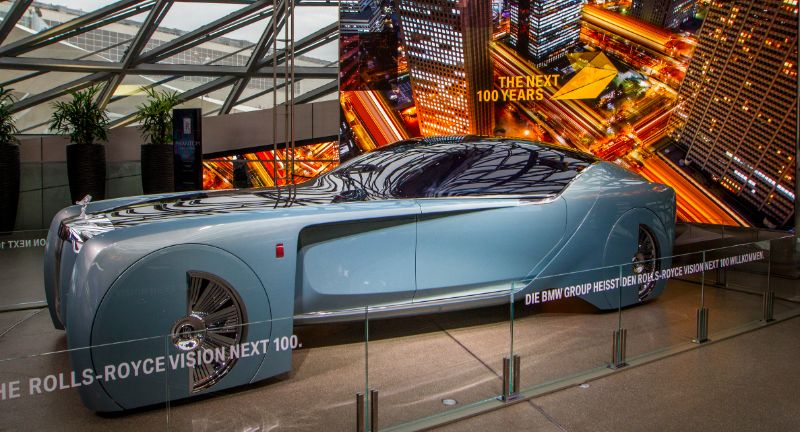
Shutterstock
The Rolls Royce Vision Next 100, also known as the 103EX, was unveiled in 2016 and was designed to envision the future of luxury mobility in the next century. Challenging the traditional norms of automotive design with its bold, sleek silhouette and a unique, lounge like interior that promises an unparalleled level of comfort and luxury. It features an advanced, zero emission powertrain and utilizes cutting edge materials and technology to offer a driving experience that is both extravagant and environmentally conscious.
Buick Centurion
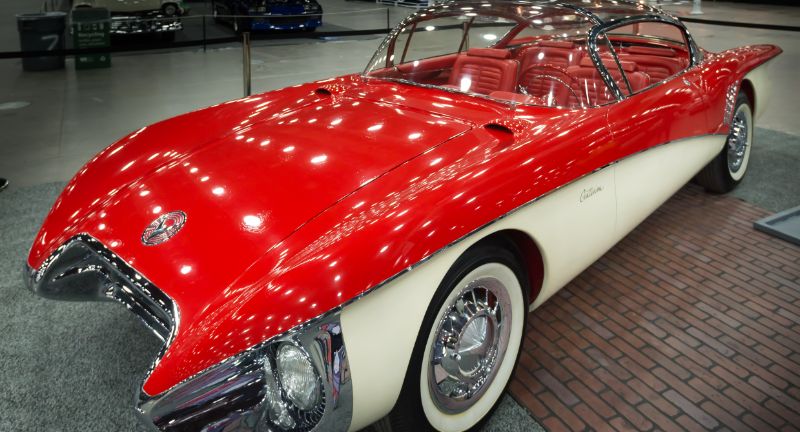
Shutterstock
The Buick Centurion is a testament to the optimism and fascination with the burgeoning jet age in the 1950s. This concept car was ahead of its time, showcasing design elements that mirrored the sleekness and speed of aircraft. Featuring a transparent bubble top, reminiscent of a fighter jet cockpit, and a body that exemplified the sleek, flowing lines of mid-century automotive design. The Centurion’s interior was equally innovative, with a rear mounted camera that fed live images to a dashboard TV screen, proposing an early concept of replacing traditional rearview mirrors, a futuristic idea that hinted at the potential of technology in enhancing driving safety and convenience.
Alfa Romeo BAT
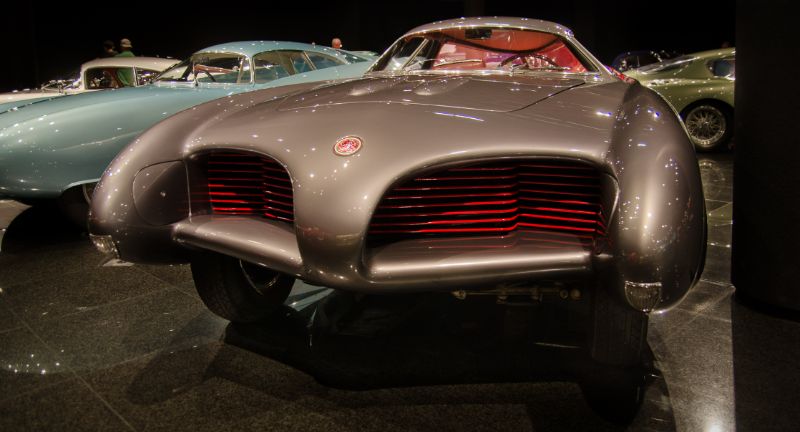
Shutterstock
The Alfa Romeo BAT series is an iconic trio of concept cars, the BAT 5, 7, and 9. Designed by Franco Scaglione and produced by Bertone in the 1950s, the vehicles were named after their aerodynamic purpose, “Berlina Aerodinamica Tecnica.” Featuring large, curved fins and bodies that minimized air resistance, achieving remarkably low drag coefficients for their time. Each model in the series presented refinements and developments over its predecessors, showcasing Alfa Romeo and Bertone’s commitment to combining high speed performance with cutting edge, visually striking designs that have left a lasting legacy in the world of automotive design.
Buick Y-Job
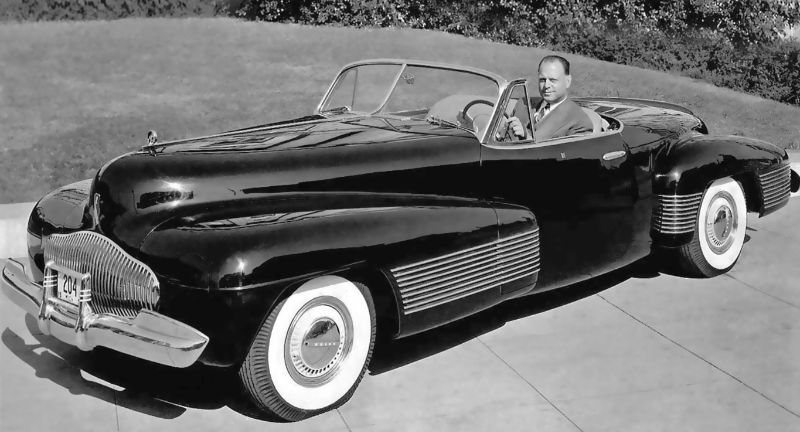
Wikipedia
The Buick Y-Job was created in 1938 by General Motors’ first design chief, Harley Earl. It is widely regarded as the auto industry’s first concept car, setting the precedent for future automotive design and innovation. The car featured a host of design elements that were revolutionary at the time, such as hidden headlamps, electric windows, and a convertible top that retracted under a metal cover. Its sleek, streamlined body and absence of running boards were radical departures from the norm, pushing the boundaries of automotive design and functionality in the pre-war era.
Mercedes Vision AVTR

Shutterstock
Unveiled at CES 2020, The Mercedes Vision AVTR is a revolutionary concept car that embodies the synergy between humans, machines, and nature. Inspired by the cinematic universe of “Avatar,” this vehicle showcases an otherworldly design featuring 33 multi-directional “bionic flaps” on its rear, resembling the scales of a reptile, which can communicate with the driver and outside environment in an interactive display of lights and movements. Its interior is equally futuristic, devoid of traditional steering wheels, replaced by a central control unit that recognizes the driver’s heartbeat and breathing, thus creating an unprecedented bond between human and vehicle.
Ford GT90
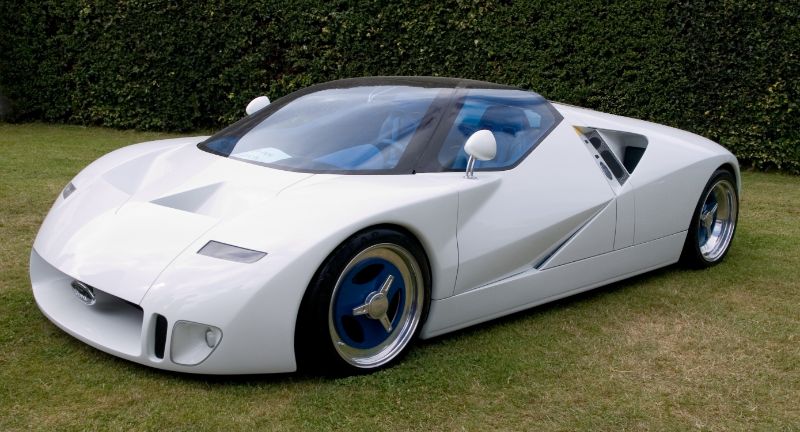
Shutterstock
The Ford GT90 was a bold experiment in performance and technology, embodying Ford’s vision of the ultimate supercar. The GT90 was unveiled at the 1995 Detroit Auto Show, showcasing its striking angular design and a unique, glacier white exterior. Powered by a quad-turbocharged V12 engine capable of producing an astonishing 720 horsepower, it was one of the most powerful cars of its time. The GT90’s advanced features has cemented its place in automotive history as a symbol of 90s supercar innovation and design ambition.
Lamborghini Terzo Millennio

Shutterstock
This visionary concept car that debuted in 2017 explores the future of super sports cars in the context of electrification and material innovation. Developed in collaboration with the Massachusetts Institute of Technology, the Terzo Millennio integrates cutting edge technology, such as supercapacitors for energy storage and carbon nanotubes in its bodywork for energy accumulation, aiming to revolutionize power delivery and efficiency.
Lincoln Futura
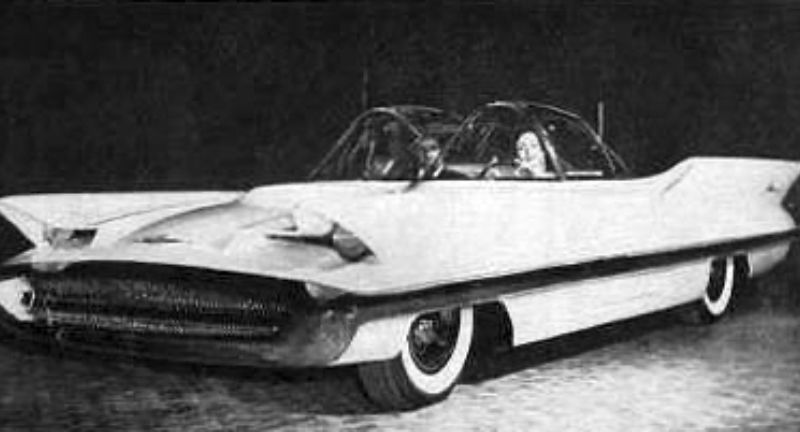
Wikipedia
The Lincoln Futura was a one-of-a-kind concept car that epitomized the extravagance and optimism of the 1950s American automotive design. Hand built in Italy costing an estimated $250,000 to produce, the Futura featured a distinctive double bubble canopy, dramatic tail fins, and a pearlescent paint finish. The Futura gained fame beyond the auto show circuit when it was later transformed into the iconic Batmobile for the 1966 “Batman” TV series, cementing its place in pop culture history.
Audi Avus

Shutterstock
The Audi Avus quattro, presented at the 1991 Tokyo Motor Show, was a groundbreaking concept car that showcased Audi’s ambitions in high performance engineering and design. Named after the historic Avus race track in Berlin, the Avus boasted a polished aluminum body that not only reflected its technological prowess but also paid homage to Audi’s racing heritage. Its mid engine design featured a W12 engine concept, promising incredible performance, though the engine in the show car was not functional. The Avus quattro’s futuristic design and proposed performance capabilities signaled Audi’s commitment to innovation, influencing the design of future production models, including the first-generation Audi R8.
Conclusion
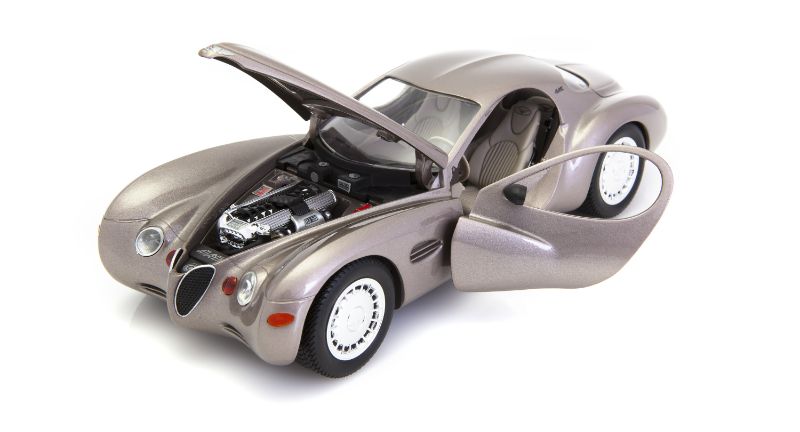
Shutterstock
As we look back on the trailblazing journey of concept cars throughout automotive history, it’s clear that these innovative marvels have played a crucial role in shaping the industry’s direction, pushing it towards new horizons. They serve not only as a testament to human ingenuity and the relentless pursuit of progress but also as a beacon, guiding the future of mobility towards more efficient, safe, and exciting possibilities. The legacy of concept cars, with their daring designs and technological advancements, continues to inspire automakers and enthusiasts alike.
More From Auto Overload
-


6 Best High Mileage Motor Oils On The Market
-
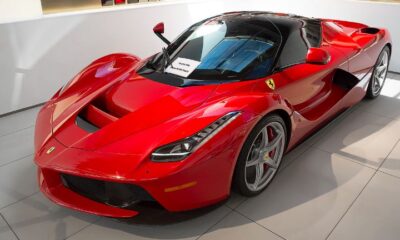

10 Of The Most Powerful Supercars On Earth
-


8 Easy Ways To Increase Your Car’s Value
-


8 Easy Ways To Boost Fuel Efficiency
-


6 Strategies To Save At The Pump
-


11 Essential Items You Need To Keep In Your Vehicle
-
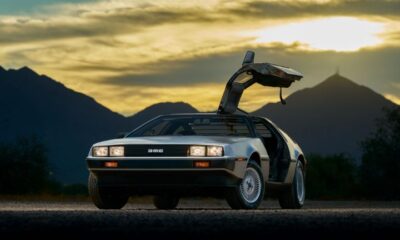

10 Weirdest Cars To Ever Hit The Road
-
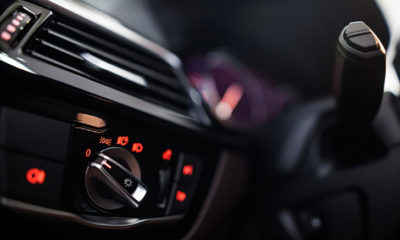

Two Essential Truths Every Car Owner Needs To Know
-


6 Popular Car Features That Will Never Be Seen Again
-


11 Coolest Cars Being Developed Right Now
-


10 Common Car Problems Every Driver Should Be Aware Of
-


8 Of The Fastest American Cars Ever Made

